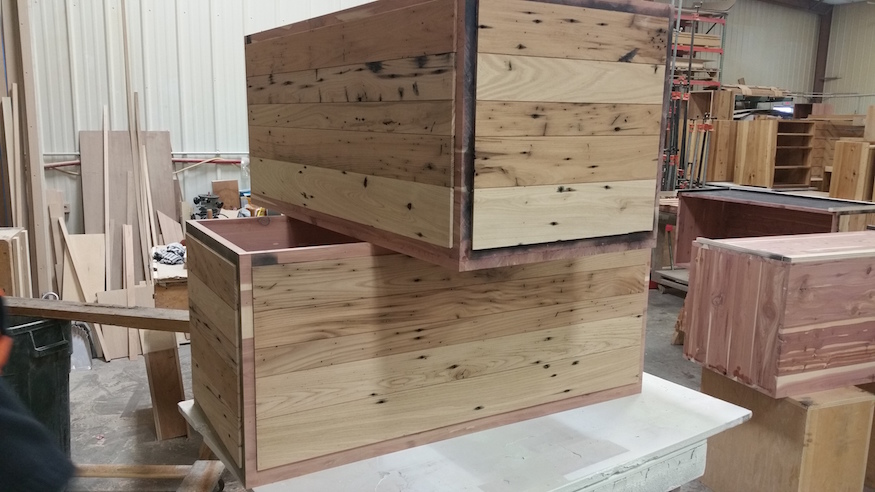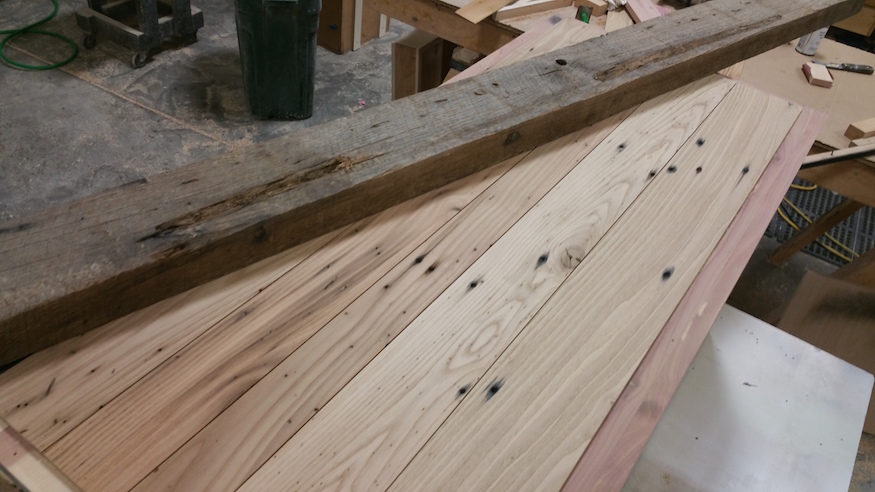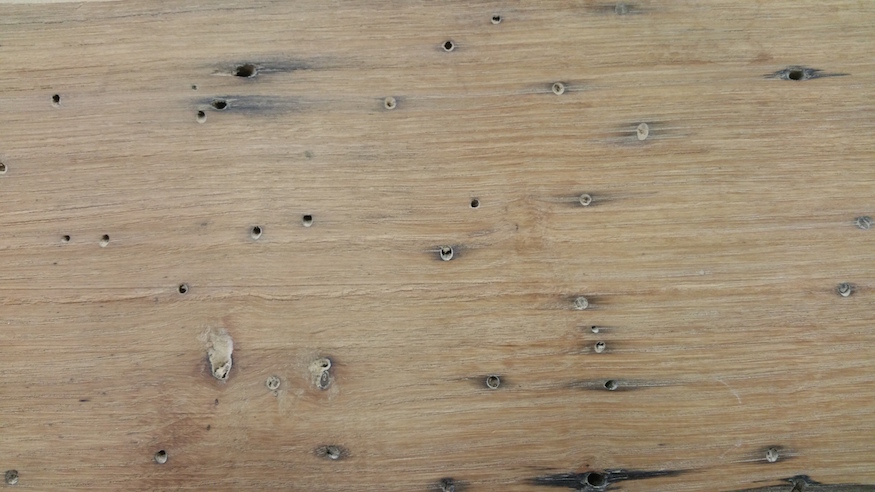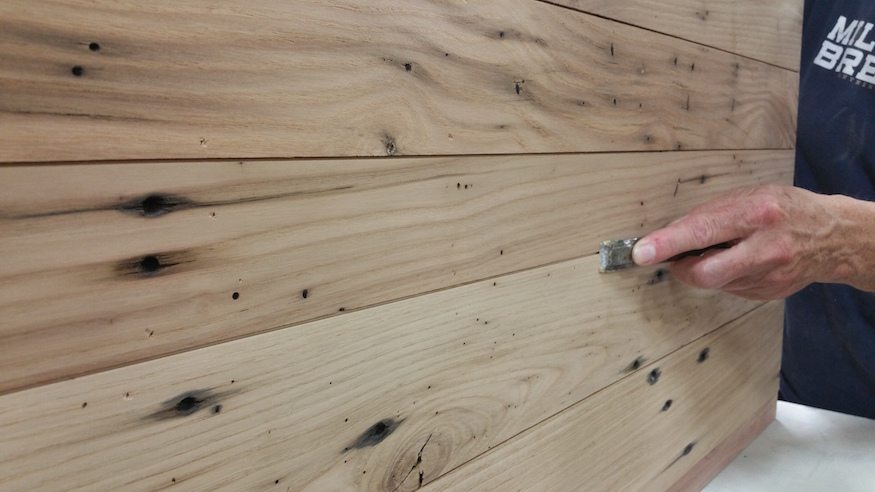Wormy Chestnut is wood with a history.
We recently had a project come through the shop involving cedar chests lined with some Wormy Chestnut. We thought this would be a good wood to feature in our “Wood of the Week” particularly because of the history the wood has in America.

What is “Wormy” Chestnut?
Wormy Chestnut is not a particular species of Chestnut but instead it refers to American Chestnut trees from a specific era. During the early 1900s there was a blight involving insects that killed a most of the mature American Chestnut trees and left them discolored and with little insect/worm holes.

It is believed that the blight came from Asia and was originally discovered in what is now the Bronx Zoo. It quickly spread across America even though there were several efforts to try and quarantine the blight. After quarantining failed the US Government assigned funds to attempt to come up with a way to stop the blight, however as the US entered World War I and realized the futility of their efforts thus far they decided to cut funding for the research.
What makes Wormy Chestnut so rare?
Because the blight wiped out nearly all of the mature American Chestnut trees, it’s lumber is both rare and relatively valuable. The wood is usually salvaged from old barns and other structures, reprocessed and then sold as reclaimed lumber. Because of the holes from both the insects/worms and from the nails, as well as the discoloration in the wood, it is preferred for use in rustic applications.

Why Use Wormy Chestnut?
Wormy Chestnut has been seen as a defective grade of wood that was discolored and damaged by insects. So you may ask yourself, “Why would I want to make something out of Wormy Chestnut?”
This wood in particular not only has a big history in America but it is also a fairly durable wood that is resistant to decay because of the presence of tannin. The trees had such great strength despite the blight that they remained standing for years and the wood was still harvested for many homes and barns.
Wormy Chestnut in Woodworking
We use wormy chestnut as often as we can, when we have the choice to do so. As stated earlier, the character of wormy chestnut is not matched by any other species. The discoloration and individuality of each piece gives the builder the opportunity to create something so unique to itself, even if multiple pieces of furniture or cabinetry are to be reproduced.

Wormy Chestnut is not stringy, tangled, or under pressure. The wood is soft to machine, yet durable enough for everyday use. Each item we make with wormy chestnut is truly unique and stands as a testament to the wood itself. Whether it is machined clean, in the rough, or utilized using a live edge, Wormy Chestnut has earned its place in American Woodworking as a premier product, and worked its way into the lives of many American Families.
To learn more about Wormy Chestnut, or to get started on your Wormy Chestnut Project, please contact us today.